Abstract
An adolescent male proband with hypersarcosinemia was discovered incidentally in a French-Canadian family; no specific disease was associated with the trait. The hypersarcosinemia is not diminished by dietary folic acid even in pharmacologic doses (30 mg/day). The normal absence of sarcosine dehydrogenase in cultured human skin fibroblasts and in leukocytes was confirmed, thus eliminating these tissues as useful sources for further investigation of mutant sarcosinemic phenotypes and genotypes.
The response in plasma of sarcosine and glycine, after sarcosine loading, distinguished the normal subject from the subjects who were presumably homozygous and heterozygous for the hypersarcosinemia allele. Sarcosine clearance from plasma was delayed greatly (t½, 6.1 hr) in the presumed homozygote and slightly (t½, 2.2 hr) in the presumed heterozygote, while plasma glycine remained constant in the former and rose in the latter. Normal subjects clear sarcosine from plasma rapidly (t½, 1.6 hr) while their plasma glycine trend is downward. The phenotypic responses suggest that hypersarcosinemia is an autosomal recessive trait in this pedigree.
Renal tubular transport of sarcosine was normal in the proband even though he presumably lacked the sarcosine oxidation which should normally occur in kidney. Sarcosine catabolism is thus not important for its own renal uptake.
Sarcosine interacts with proline and glycine during its absorption in vivo. Studies in vitro in rat kidney showed that sarcosine transport is mediated, saturable, and energy dependent. Sarcosine has no apparent transport system of its own; it uses the low Km transport systems for L-proline and glycine to a minor extent and a high Km system shared by these substances for the major uptake at concentrations encountered in hypersarcosinemia. Intracellular sarcosine at high concentration will exchange with glycine on one of these systems, which may explain a paradoxical improvement in renal transport of glycine after sarcosine loading in the hypersarcosinemic proband.
Full text
PDF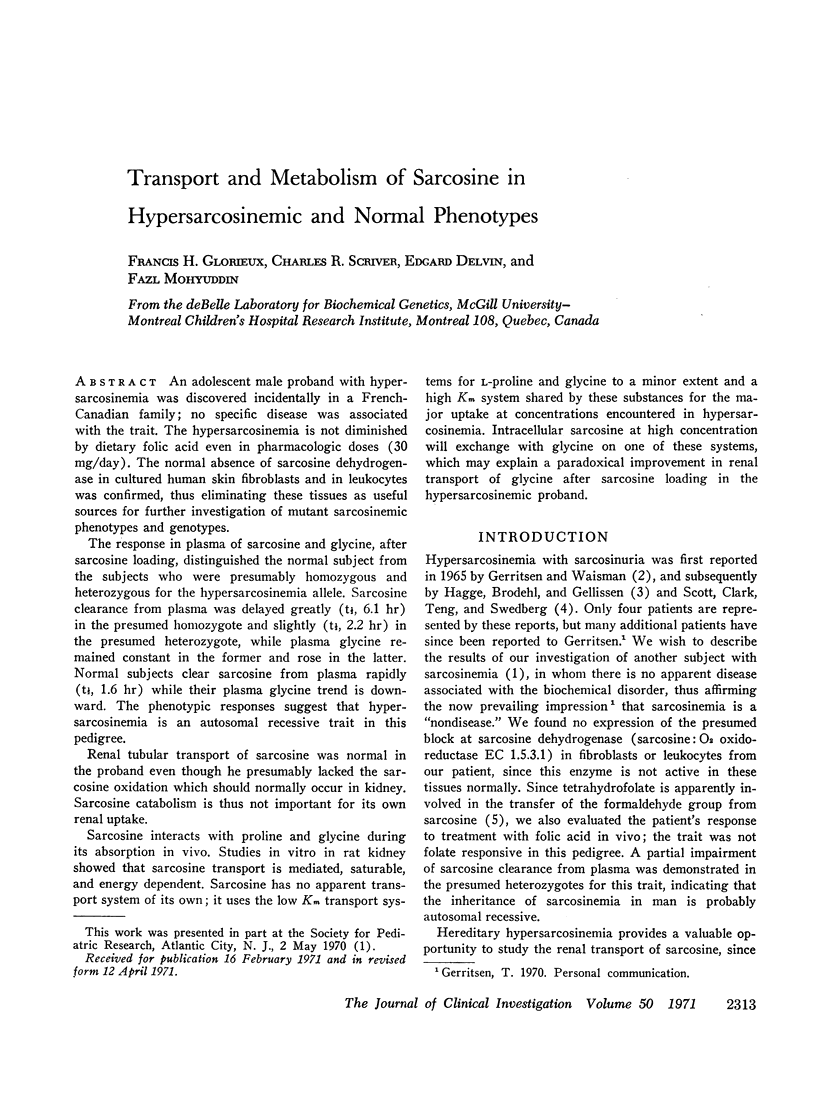
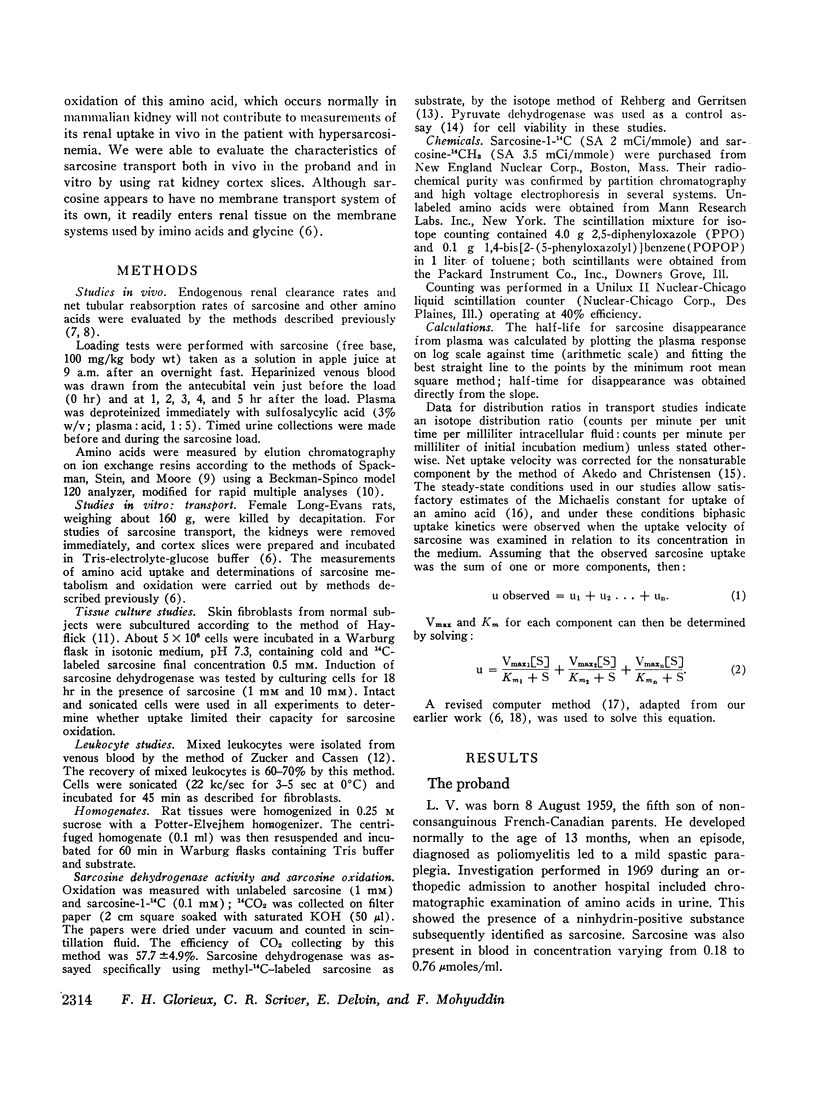
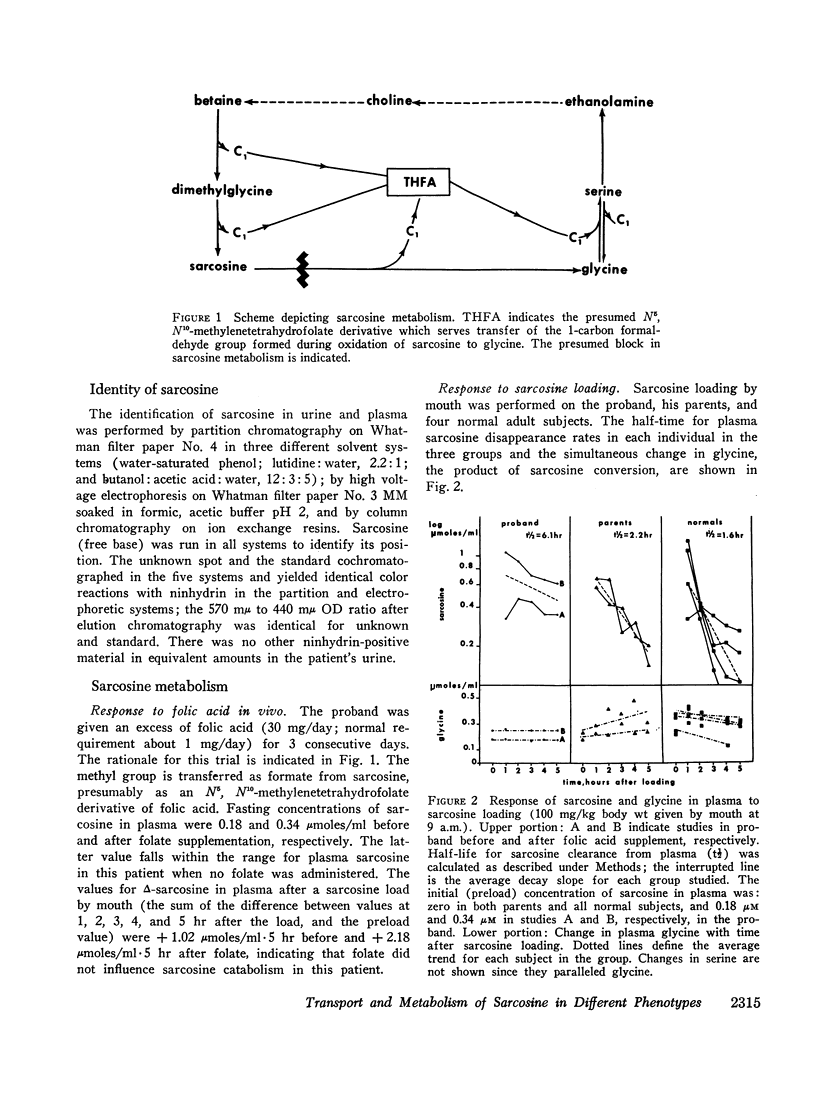
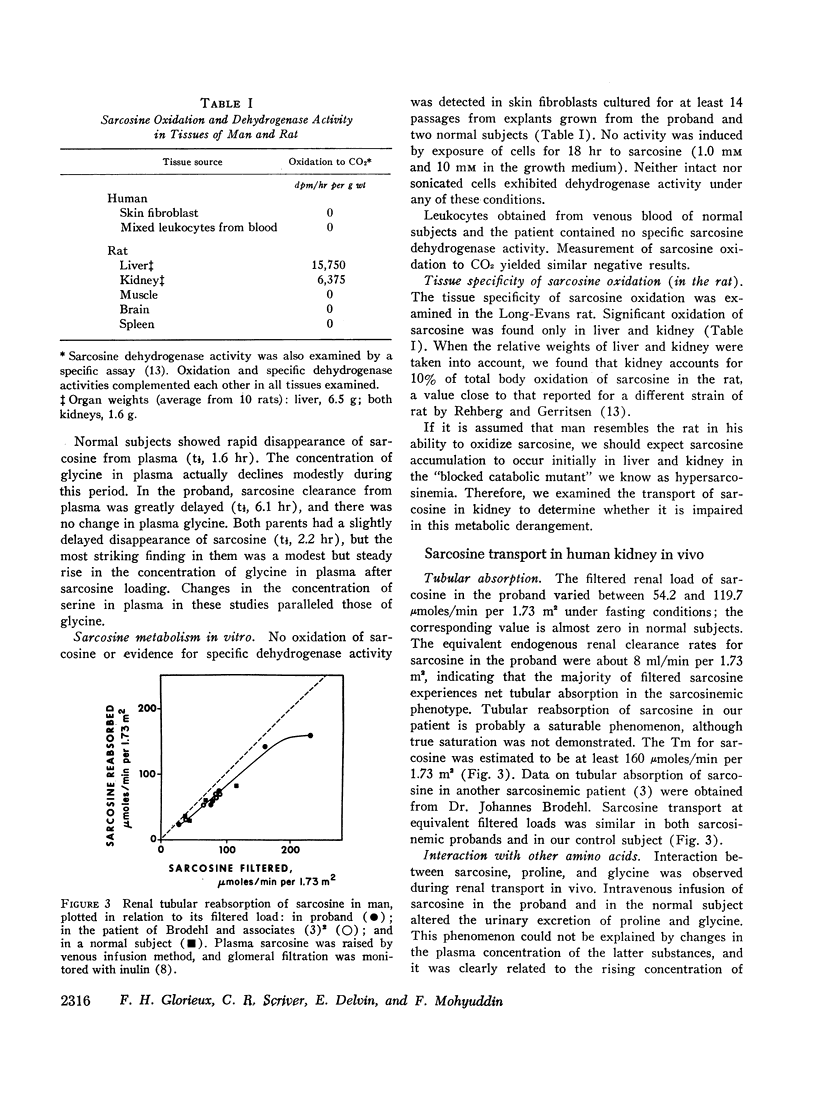
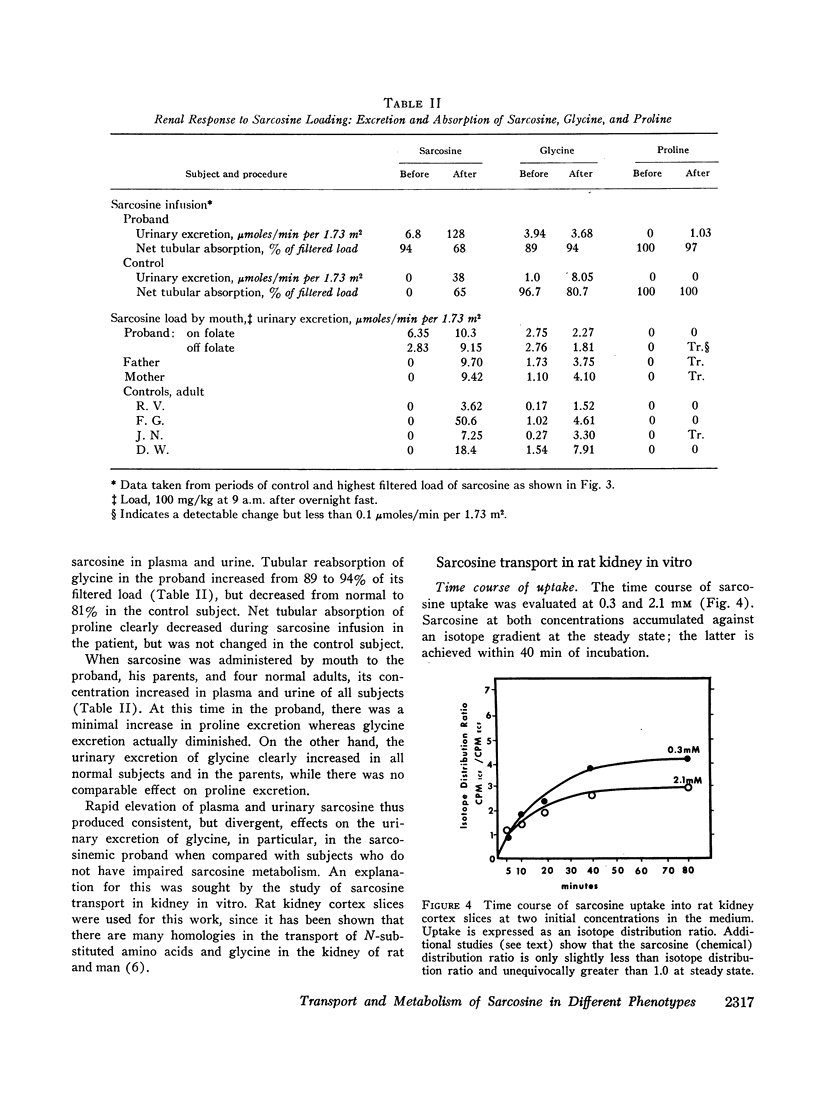
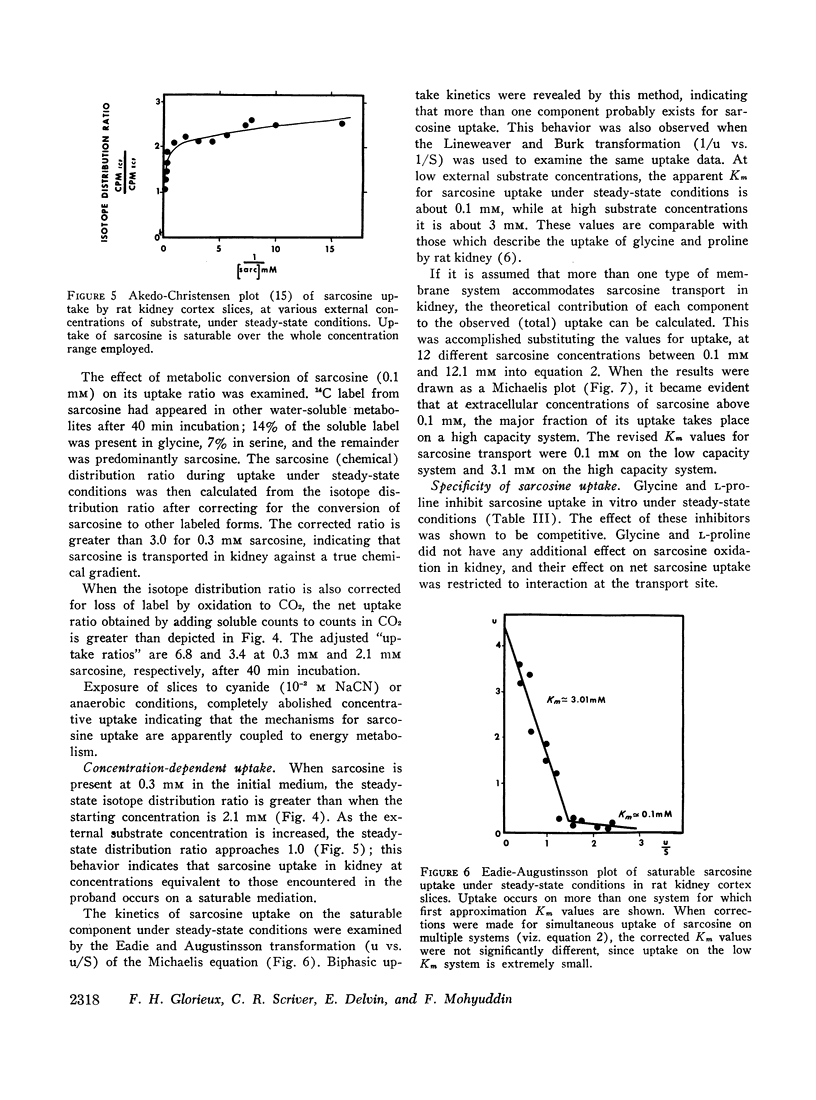
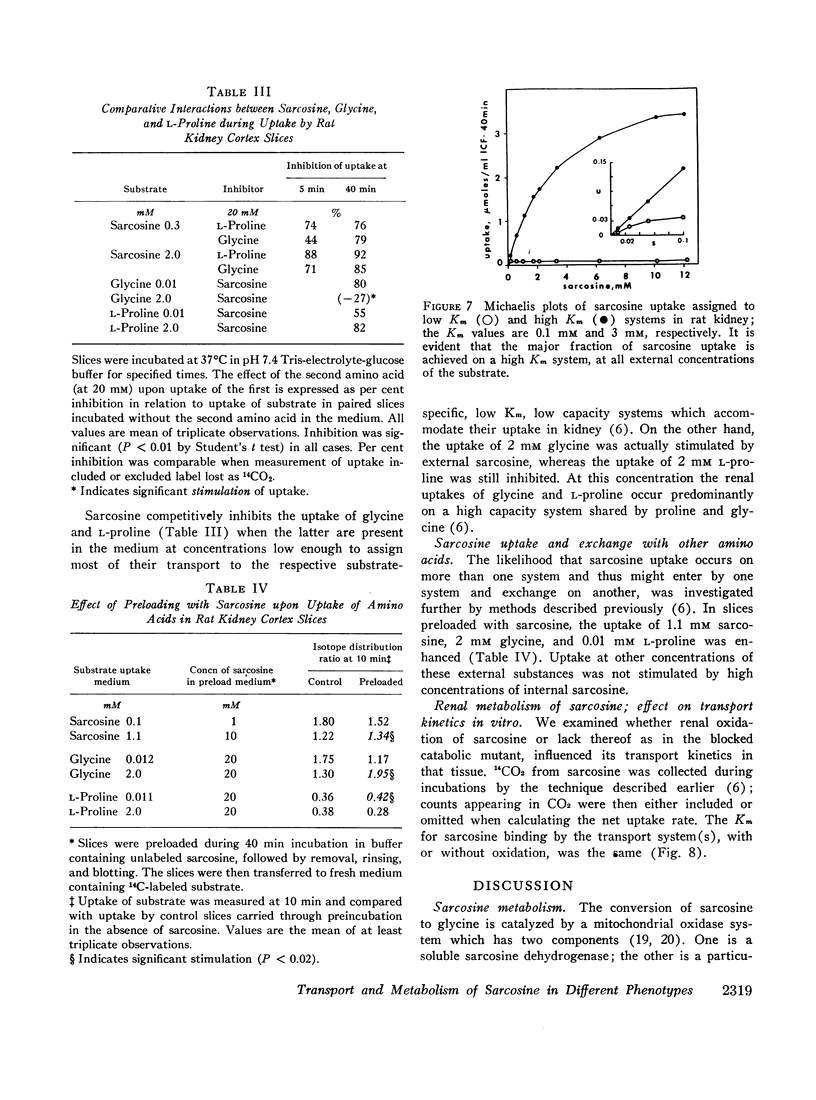
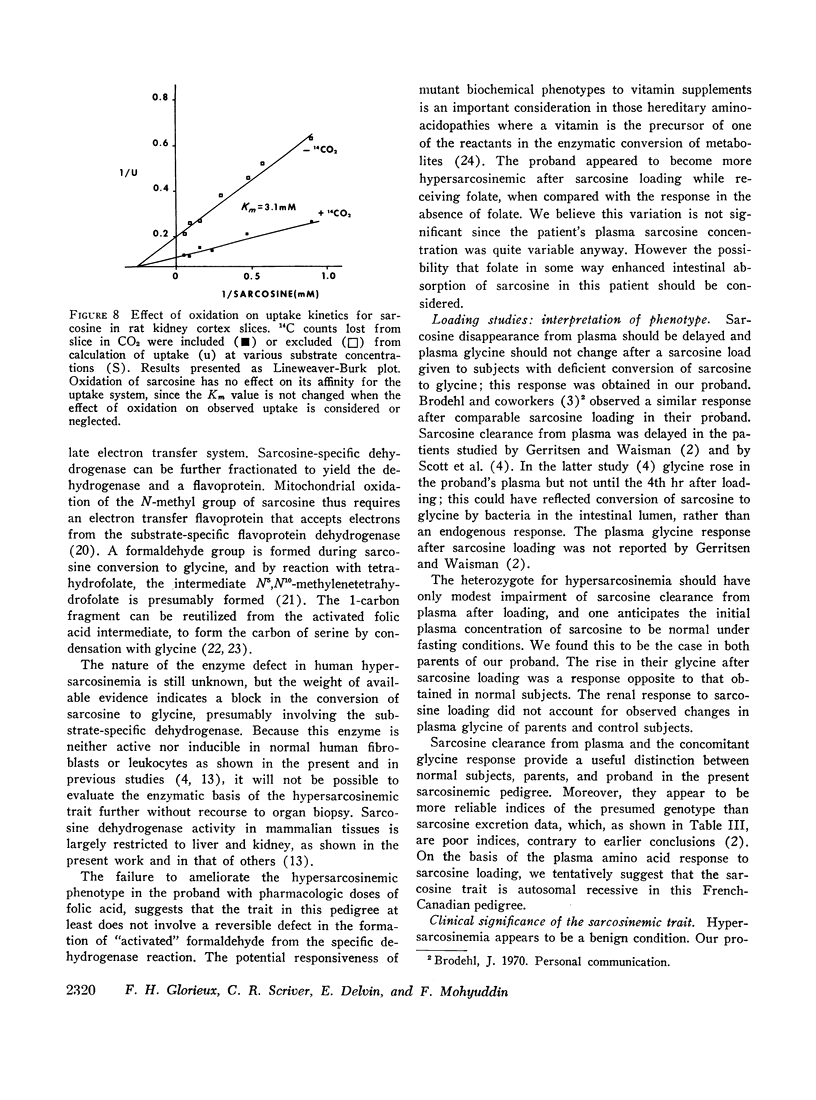
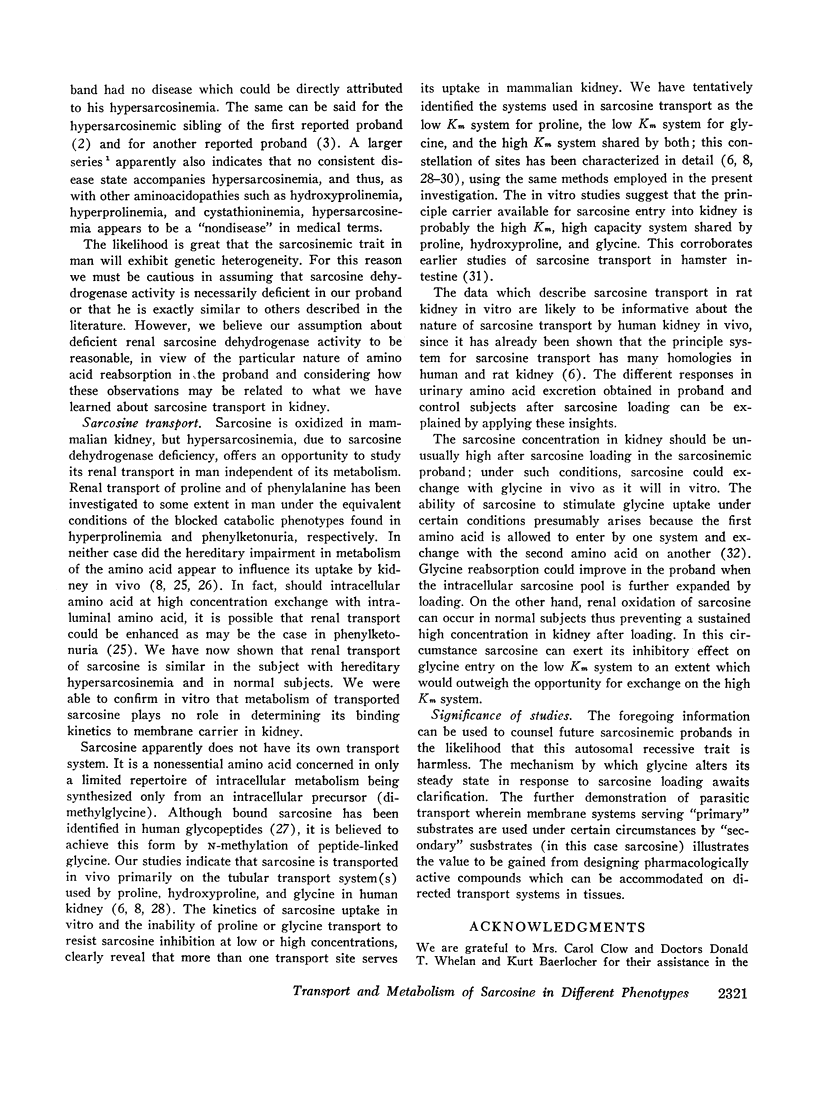
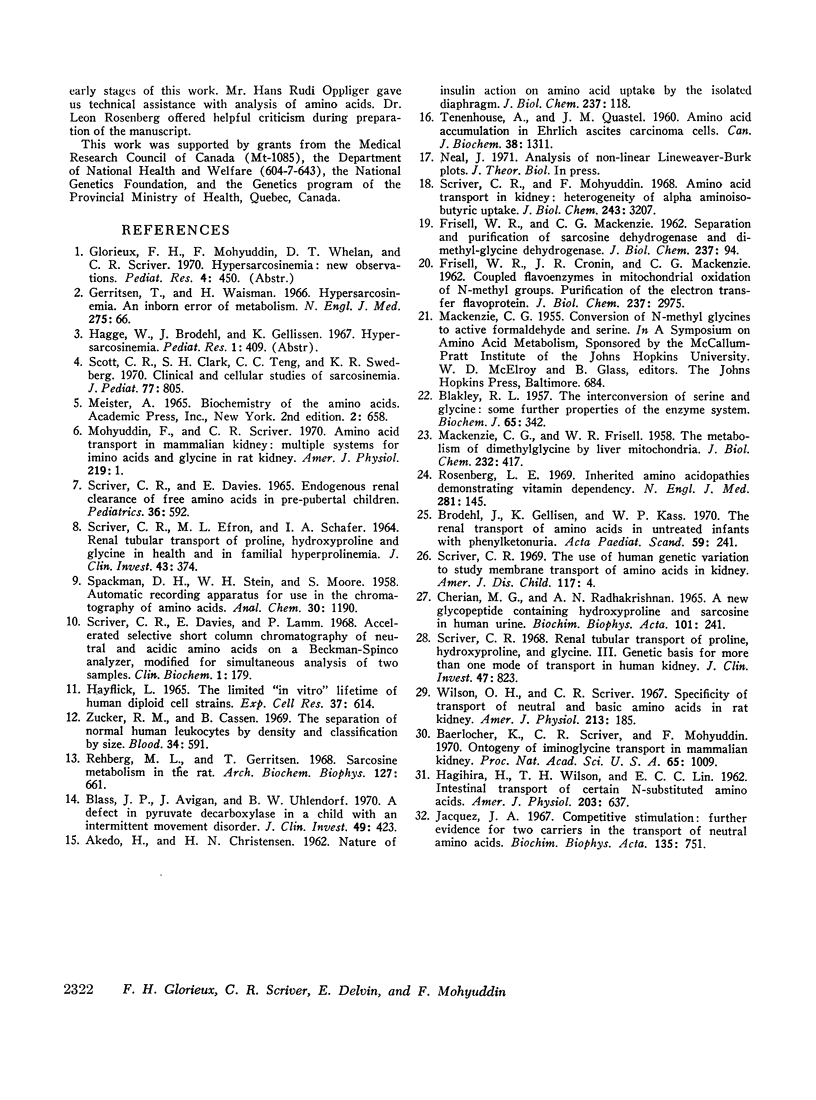
Selected References
These references are in PubMed. This may not be the complete list of references from this article.
- AKEDO H., CHRISTENSEN H. N. Nature of insulin action on amino acid uptake by the isolated diaphragm. J Biol Chem. 1962 Jan;237:118–122. [PubMed] [Google Scholar]
- BLAKLEY R. L. The interconversion of serine and glycine; some further properties of the enzyme system. Biochem J. 1957 Feb;65(2):342–348. doi: 10.1042/bj0650342. [DOI] [PMC free article] [PubMed] [Google Scholar]
- Baerlocher K. E., Scriver C. R., Mohyuddin F. Ontogeny of iminoglycine transport in mammalian kidney. Proc Natl Acad Sci U S A. 1970 Apr;65(4):1009–1016. doi: 10.1073/pnas.65.4.1009. [DOI] [PMC free article] [PubMed] [Google Scholar]
- Blass J. P., Avigan J., Uhlendorf B. W. A defect in pyruvate decarboxylase in a child with an intermittent movement disorder. J Clin Invest. 1970 Mar;49(3):423–432. doi: 10.1172/JCI106251. [DOI] [PMC free article] [PubMed] [Google Scholar]
- Brodehl J., Gellissen K., Kaas W. P. The renal transport of amino acids in untreated infants with phenylketonuria. Acta Paediatr Scand. 1970 May;59(3):241–248. doi: 10.1111/j.1651-2227.1970.tb08999.x. [DOI] [PubMed] [Google Scholar]
- Cherian M. G., Radhakrishnan A. N. A new glycopeptide containing hydroxyproline and sarcosine in human urine. Biochim Biophys Acta. 1965 Jul 1;101(2):241–244. doi: 10.1016/0926-6534(65)90061-8. [DOI] [PubMed] [Google Scholar]
- FRISELL W. R., CRONIN J. R., MACKENZIE C. G. Coupled flavoenzymes in mitochondrial oxidation of N-methyl groups. J Biol Chem. 1962 Sep;237:2975–2980. [PubMed] [Google Scholar]
- FRISELL W. R., MACKENZIE C. G. Separation and purification of sarcosine dehydrogenase and dimethylglycine dehydrogenase. J Biol Chem. 1962 Jan;237:94–98. [PubMed] [Google Scholar]
- Gerritsen T., Waisman H. A. Hypersarcosinemia: an inborn error of metabolism. N Engl J Med. 1966 Jul 14;275(2):66–69. doi: 10.1056/NEJM196607142750202. [DOI] [PubMed] [Google Scholar]
- HAGIHIRA H., WILSON T. H., LIN E. C. Intestinal transport of certain N-substituted amino acids. Am J Physiol. 1962 Oct;203:637–640. doi: 10.1152/ajplegacy.1962.203.4.637. [DOI] [PubMed] [Google Scholar]
- HAYFLICK L. THE LIMITED IN VITRO LIFETIME OF HUMAN DIPLOID CELL STRAINS. Exp Cell Res. 1965 Mar;37:614–636. doi: 10.1016/0014-4827(65)90211-9. [DOI] [PubMed] [Google Scholar]
- Jacquez J. A. Competitive stimulation: further evidence for two carriers in the transport of neutral amino acids. Biochim Biophys Acta. 1967 Sep 9;135(4):751–755. doi: 10.1016/0005-2736(67)90106-x. [DOI] [PubMed] [Google Scholar]
- MACKENZIE C. G., FRISELL W. R. The metabolism of dimethylglycine by liver mitochondria. J Biol Chem. 1958 May;232(1):417–427. [PubMed] [Google Scholar]
- Mohyuddin F., Scriver C. R. Amino acid transport in mammalian kidney: Multiple systems for imino acids and glycine in rat kidney. Am J Physiol. 1970 Jul;219(1):1–8. doi: 10.1152/ajplegacy.1970.219.1.1. [DOI] [PubMed] [Google Scholar]
- Rehberg M. L., Gerritsen T. Sarcosine metabolism in the rat. Arch Biochem Biophys. 1968 Sep 20;127(1):661–665. doi: 10.1016/0003-9861(68)90275-0. [DOI] [PubMed] [Google Scholar]
- Rosenberg L. E. Inherited aminoacidopathies demonstrating vitamin dependency. N Engl J Med. 1969 Jul 17;281(3):145–153. doi: 10.1056/NEJM196907172810309. [DOI] [PubMed] [Google Scholar]
- SCRIVER C. R., EFRON M. L., SCHAFER I. A. RENAL TUBULAR TRANSPORT OF PROLINE, HYDROXYPROLINE, AND GLYCINE IN HEALTH AND IN FAMILIAL HYPERPROLINEMIA. J Clin Invest. 1964 Mar;43:374–385. doi: 10.1172/JCI104922. [DOI] [PMC free article] [PubMed] [Google Scholar]
- Scott C. R., Clark S. H., Teng C. C., Swedberg K. R. Clinical and cellular studies of sarcosinemia. J Pediatr. 1970 Nov;77(5):805–811. doi: 10.1016/s0022-3476(70)80239-6. [DOI] [PubMed] [Google Scholar]
- Scriver C. R., Davies E. Endogenous renal clearance rates of free amino acids in pre-pubertal children. (Employing an accelerated procedure for elution chromatography of basic amino acids on ion exchange resin). Pediatrics. 1965 Oct;36(4):592–598. [PubMed] [Google Scholar]
- Scriver C. R., Mohyuddin F. Amino acid transport in kidney. Heterogeneity of alpha-aminoisobutyric uptake. J Biol Chem. 1968 Jun 25;243(12):3207–3213. [PubMed] [Google Scholar]
- Scriver C. R. Renal tubular transport of proline, hydroxyproline, and glycine. 3. Genetic basis for more than one mode of transport in human kidney. J Clin Invest. 1968 Apr;47(4):823–835. doi: 10.1172/JCI105776. [DOI] [PMC free article] [PubMed] [Google Scholar]
- Scriver C. R. Use of human genetic variation to study membrane transport of amino acids in kidney. Am J Dis Child. 1969 Jan;117(1):4–12. doi: 10.1001/archpedi.1969.02100030006002. [DOI] [PubMed] [Google Scholar]
- TENENHOUSE A., QUASTEL J. H. Amino acid accumulation in Ehrlich ascites carcinoma cells. Can J Biochem Physiol. 1960 Nov;38:1311–1326. [PubMed] [Google Scholar]
- Wilson O. H., Scriver C. R. Specificity of transport of neutral and basic amino acids in rat kidney. Am J Physiol. 1967 Jul;213(1):185–190. doi: 10.1152/ajplegacy.1967.213.1.185. [DOI] [PubMed] [Google Scholar]
- Zucker R. M., Cassen B. The separation of normal human leukocytes by density and classification by size. Blood. 1969 Nov;34(5):591–600. [PubMed] [Google Scholar]


